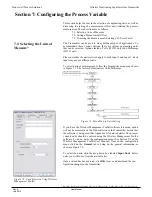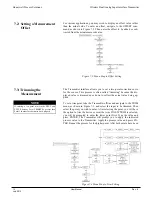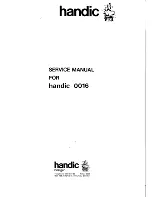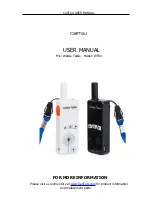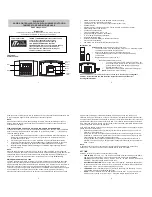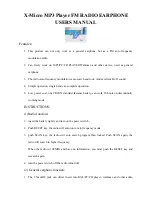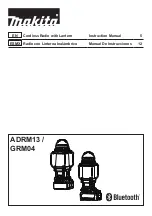
Honeywell Process Solutions
Wireless Dual Analog Input Interface Transmitter
Rev. 8
User Manual
19
July 2012
5.2: RF Baud Rate Selection
The RF Baud Rate refers to the speed at which the Base Radio and Trans-
mitters communicate. The RF baud rate for the Base Radio and the Trans-
mitter must be the same in order for successful communication to occur.
There are three selectable settings with the fastest update times and ranges
listed below:
•
4.8K
— Rate of 4.8K baud (Update every 20 seconds)
— Range of 3000ft (Line of Sight)
•
19.2K
— Rate of 19.2K baud (Update every 5 seconds)
— Range of 2000ft to 2500ft (Line of Sight)
•
76.8K
— Rate of 76.8K baud (Update every 1 second)
— Range of 500ft to 750ft (Line of Sight)
A faster RF Baud Rate allows the user to transmit more information in a
given period of time, but it will also limit the Transmitter’s range. If you
need more distance out of your Transmitters or are encountering difficul-
ties by frequently losing communications, then select a slower baud rate.
Follow the Base Radio menu map shown in Figure 5.2 to configure the RF
Baud Rate. The factory default is the 19.2K Baud Rate.
Figure 5.2: Menu Map to RF Baud Rate Setting
NOTE
If you change the baud rate of a Transmitter, you
must also change the baud rate of the Base Radio
and all other Transmitters that are communicating
with that Base Radio.
Each Transmitter is identified by the Base Radio and WMT, according to
the RF ID given to that particular unit. Two Transmitters on the same RF
Channel CANNOT have the same RF ID (if you do not know the RF
Channel, see section 5.1). When the Transmitter is in the Operations Se-
quence, pressing the ENTER button displays the Read-Only Sequence on
the LCD. The RF of that unit will be displayed in the format: ID 3.
All Transmitters in your system are set to a default RF ID number upon
shipment. For example, if you have ordered a Base Radio and three Trans-
mitters, the Transmitters will be configured to ID’s 0, 0 and 0. You must
set these units to three different RF IDs between 1 and 100. The Transmit-
ters in this example could be set to RF IDs 1, 2, and 3.
First determine the RF ID’s you’d like to give each unit. Then follow the
menu map shown in Figure 5.3 to configure the RF ID. The factory de-
fault is RF ID 0, which disables the RF communication of the unit.
5.3: RF Identification Selection
Summary of Contents for XYR 5000 Series
Page 2: ......





























